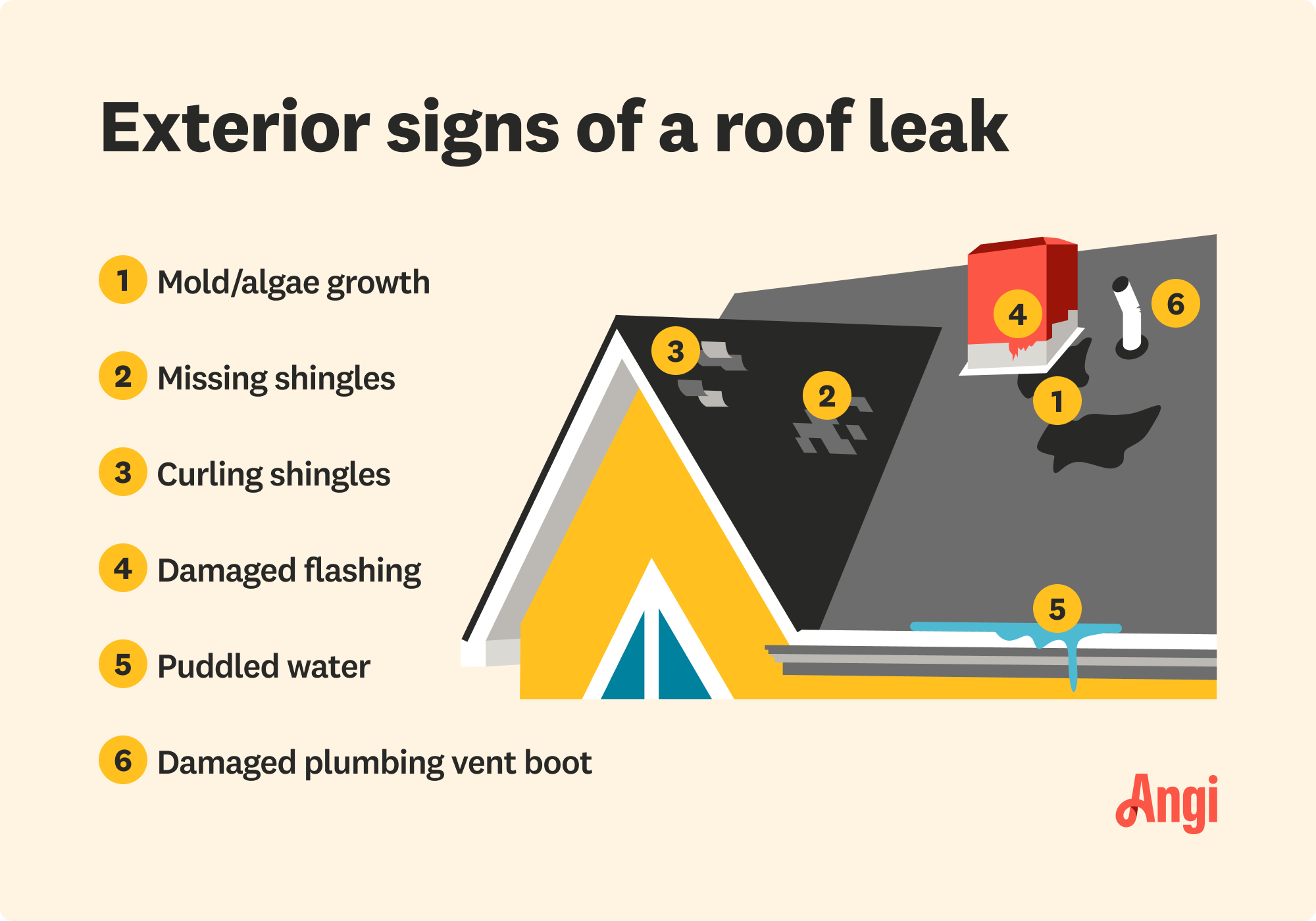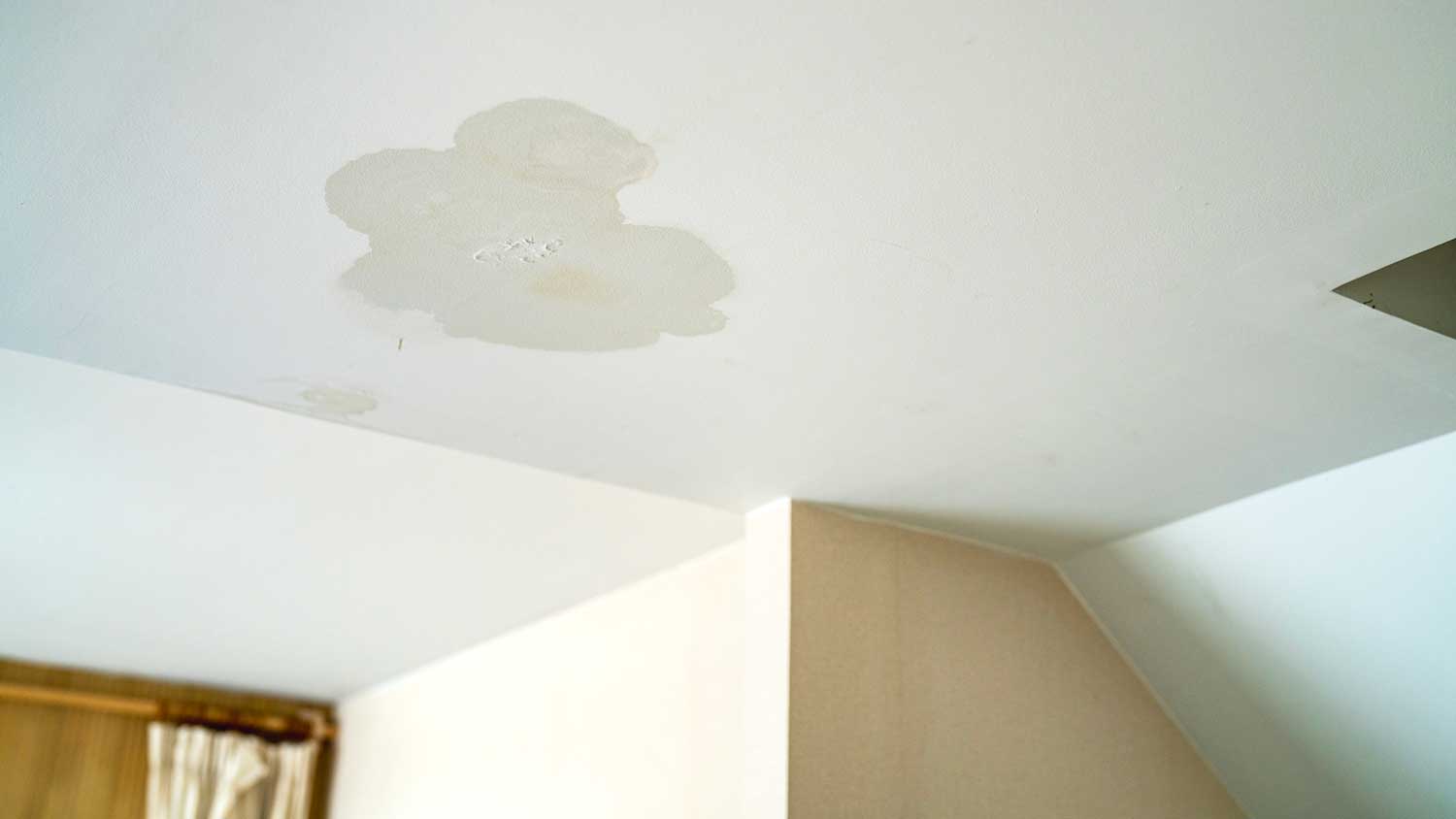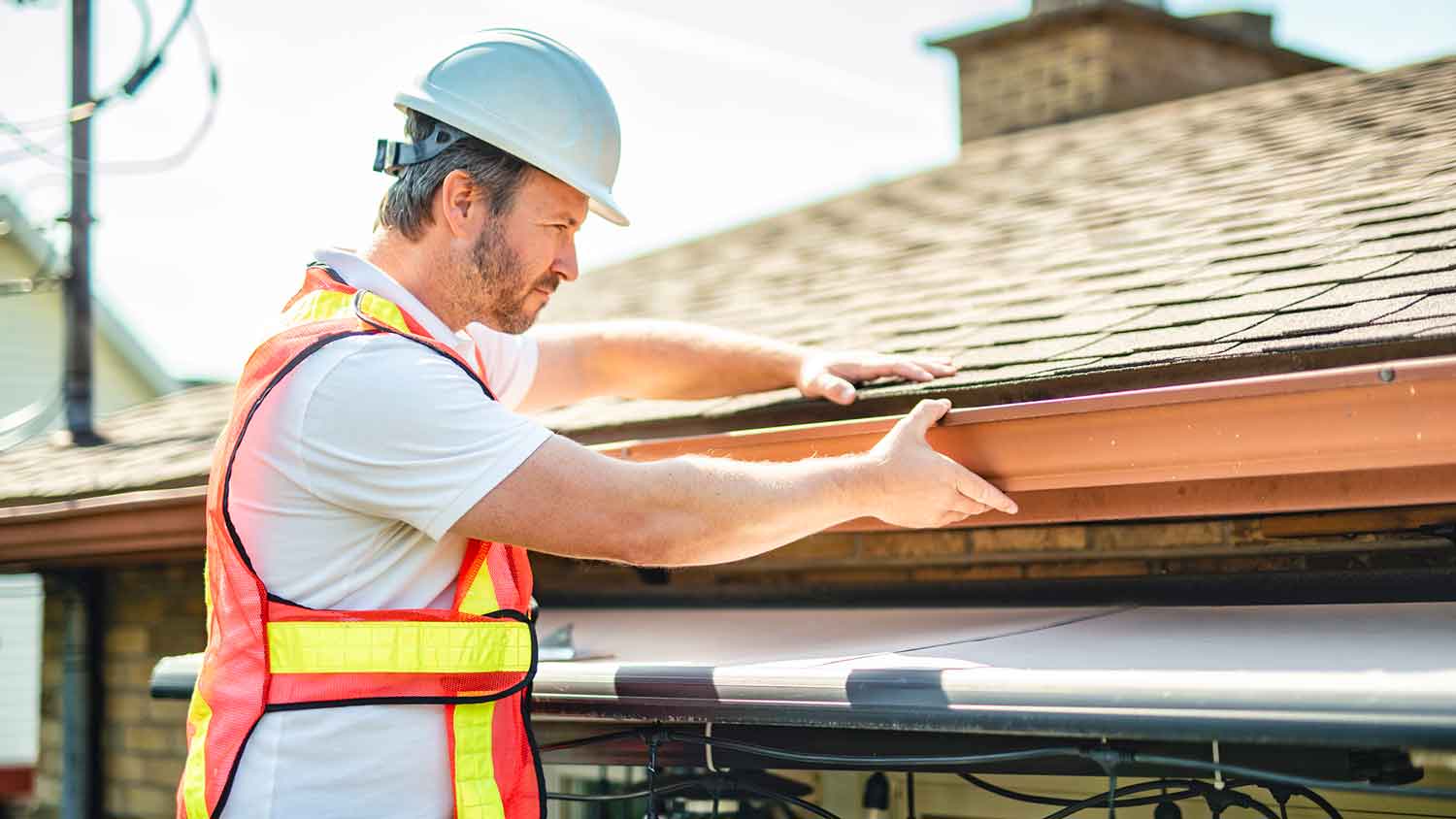9 Tips for Finding a Roof Leak In Your Home
Avoid going through a rougher patch than your roof by not finding the leak


Finding a roof leak isn’t always the easiest project. For one, water travels along your roof's structure, so the water stain you see on your ceiling may not be directly below the actual leak point. Also, some problems may look like roof leaks but are caused instead by leaking pipes, condensation, or even mold. Check out the nine tips below to help you pinpoint the source of your roof leak.

1. Search the Attic
There are many signs of a roof leak and, if you can access your attic, that’s the first and most common place you’d find evidence of a leak. Roof leaks often present in the attic in the form of soaked insulation, which looks darker than other sections, or wet wooden planks. If you use your attic for storage, check for water pooling on plastic bins or degrading cardboard.
2. Look for Ceiling Stains

If you don’t have an attic to catch the leak, you may have some parts of your ceiling that look suspiciously darker than other areas. Trust your gut here—it isn’t the lighting or some dirty paint. You know your house better than anyone so if a section of your ceiling seems a shade too dark or is discolored in any way, you need to make sure it isn’t from water damage.
A roof leak near electrical wiring is a serious safety concern because water can come into contact with exposed wires, potentially causing electrical short circuits, sparking, and fire hazards. If you suspect a leak near wiring, immediately turn off the power to the area and call a roofer and an electrician to handle the issue.
3. Check the Roof’s Exterior
You can DIY most of these tips, but we recommend calling a roof sealing professional near you to check your roof’s exterior. People usually notice leaks when it’s raining, and when it rains, the roof gets slippery. You don’t want to risk your health and safety by checking out a leak on a wet roof. Instead, call a pro who can find a leak on top of your roof safely and quickly.
4. Investigate Gutters and Downspouts

While technically not part of the roof, gutter, and downspouts are connected to the roof by vertical wooden fascia. Incorrect installation, decay from age, and physical damage can all contribute to a gutter not being properly attached, allowing water to leak through the gaps. This is more difficult to check than simply taking a look in your attic and may require a pro if you can’t find the leak any other way. Note that leaks from gutters and downspouts are often at the lowest part of the roof, and only on the perimeter.
5. Check Flashing and Other Connection Points
If you have no idea what roof flashing is, you’re not alone. However, once you know what to look for, it’s easy to spot. Roof flashing is the metal overlays placed at the intersection between your roof and another material like a chimney or gutter. Flashing (and other connection points) are frequently the cause of leaks as they can be damaged by falling tree limbs, lifted from high winds, and deform from ice formation.
6. Get Your House Mold Tested
If your roof leak is caused by mold, you may have a serious and expensive project on your hands. You may not think of mold when you discover a leak but it’s an unfortunate reality of damp climates and houses with condensation problems. If you spot visible mold that may be causing a leak, call a mold professional to check it out. In fact, even if it doesn’t look like it’s causing a leak, you should call the same pro. Mold damage is not something you want to take casually.
7. Make Sure Your Chimney Isn’t Leaking

If you have a chimney and can’t find your roof leak, check that there’s no structural damage to your chimney’s crown, liner, cap, or flashing. Issues with any of these can cause your chimney to leak which can cause serious damage to your walls and foundation. Don’t think that because there’s no water in your fireplace your chimney can’t be leaking. A roofing pro could locate the leak, but a chimney professional is the best person to make the repair.
8. Rule Out Copycat Leaks
Not all leaks that affect the uppermost parts of your home are from a bad roof. Plumbing leaks, window leaks, pest intrusion, HVAC issues, bad insulation, and condensation all exhibit the same characteristics of a roof leak. Not to be repetitive but if you have an attic, check there first. If you don’t and the roof seems to be in good condition, start considering some of the alternatives mentioned here.
9. Hose Down Your Roof
Ideally, you found the leak with any of the above methods. But if you still can’t find it and want a controlled way of checking leakage, you can try spraying your roof with water. This is much easier with a flat roof, as you can safely walk around. If you have a roof with a sharp pitch, get a high-pressure faucet and spray the roof while someone inside watches for leaks.





- Roofers
- Metal Roofing
- Roof Repair
- Roof Inspection
- Vinyl Siding Repair Contractors
- Flat Roofing Companies
- Commercial Roofing
- Emergency Roofing Companies
- Leaky Roof Repair
- Metal Roof Repair
- Business Roof Repair
- Flat Roof Repair
- Tile Roof Repair
- Slate Roofers
- Rubber Roofers
- Roofing & Siding
- Metal Roof Installation
- Affordable Roofing
- Roof Sealing
- Attic Ventilation Contractors
















